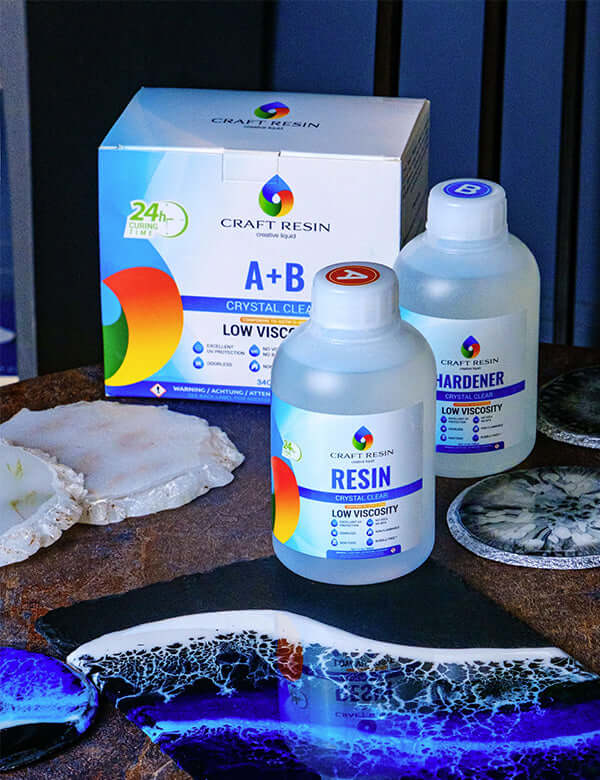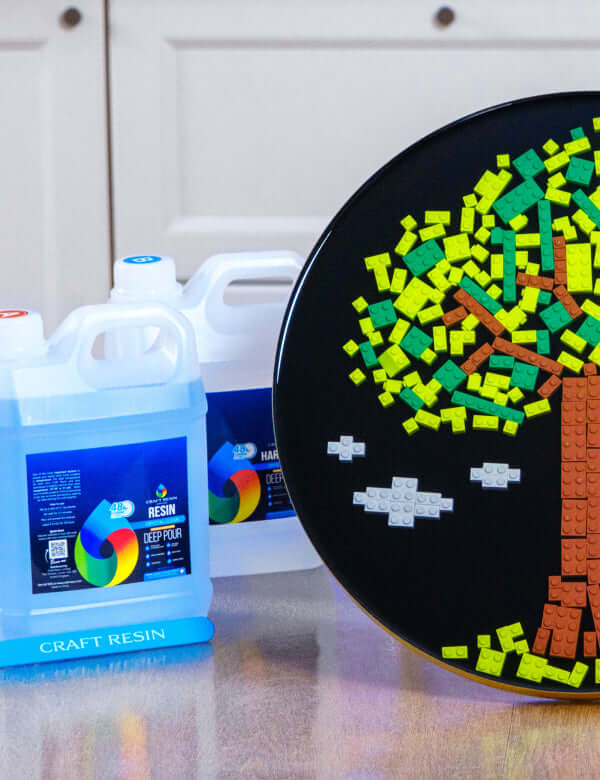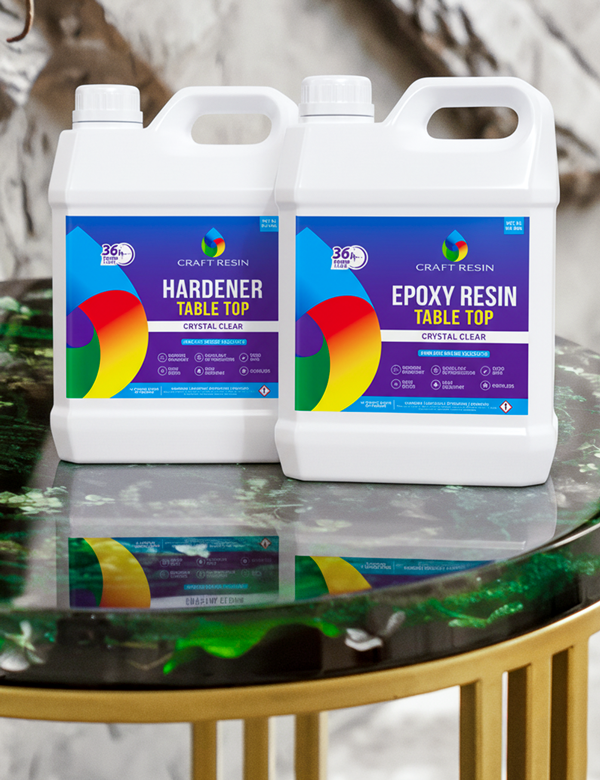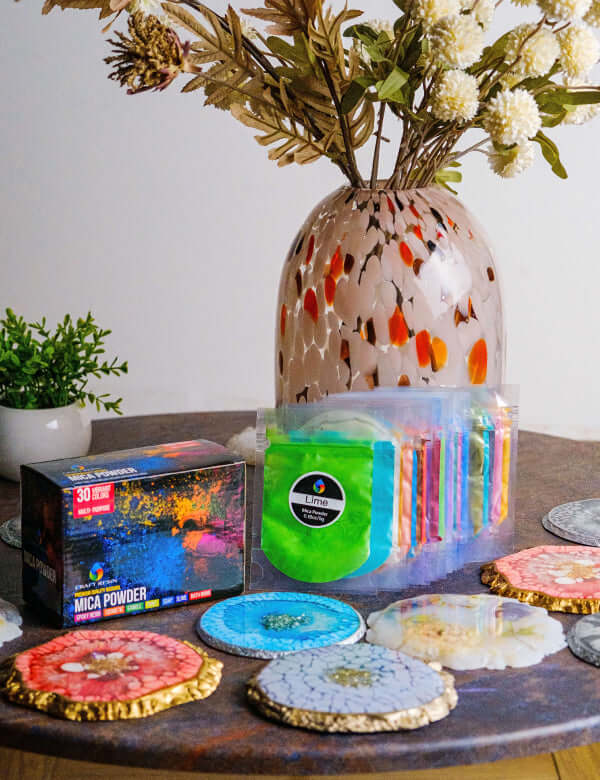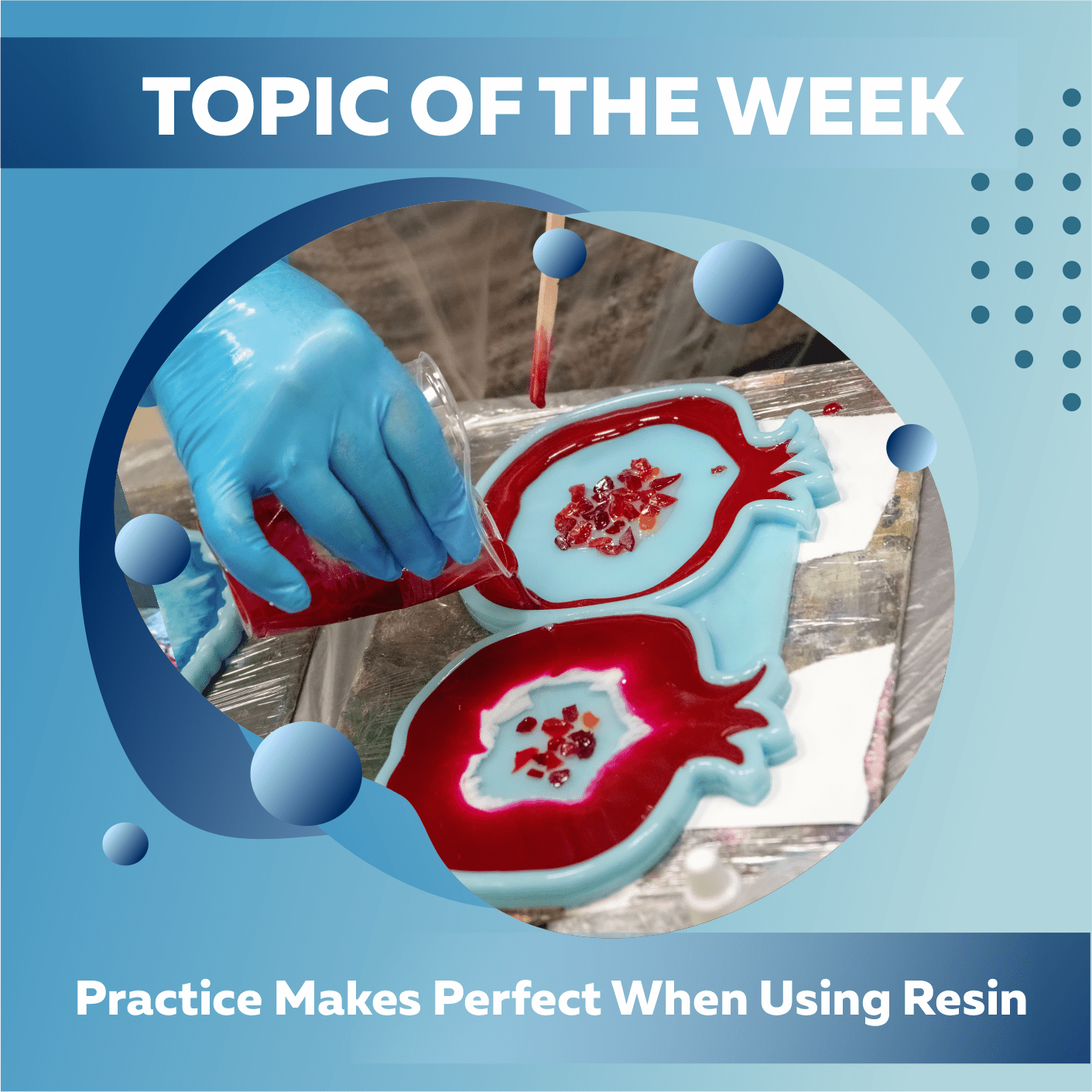We boast that even inexperienced users may get professional-looking results with our epoxy resin and hardener, and this is, in fact, the case.
But...
Several factors, such as your skill level as a craftsperson, ability to follow directions, and environmental factors you might not have considered, might go wrong while dealing with crystal clear epoxy resin.
To make the most amazing resin sculptures, you should anticipate initial attempts to be less than ideal and instead be prepared to keep going, explore, and learn as you go.
We know how discouraging it is to put time and effort into a project only to have it fall short of your expectations, especially if you've seen the magnificent epoxy resin creations of others and thought, "Why the hell can't I produce as they have!?"
You should take a step back and objectively evaluate how far you've come in the craft resin epoxy resin world since someone else may have already started manufacturing things years before you did. Perhaps their initial attempts were even more unsuccessful than yours.

When starting to work with our resin, it can be frustrating to encounter issues that can be avoided with some forethought and preparation.
Getting ready:
As a matter of fact, before engaging in any kind of original thought, careful preparation is essential. Get the temperature ready (we'll get to that in a second), and ensure you have everything you need available, including a covered workspace in case of spills.
Between 40 and 50 minutes is a typical working period for Craft Resin (depending on various factors). Not much time is available to use the resin, so be sure you have everything you need. You shouldn't have to scramble around for a mold or a towel while the resin is setting.
Don't let things get dirty or unsafe where you work. Resin is quite fluid and should be handled with care. Therefore it is important to safeguard carpets, tables, and other surfaces. Resin is notoriously sticky, so it's crucial to take extra care to keep out contaminants like dirt, dust, pet hair, and insects.
Wear a plastic apron and extra gloves just in case, and bring along a face mask or respirator if the area you're working in is stuffy.
Read our Equipment Blog to find out what supplies you'll need.
Temperature:
Many individuals fail to give thought to the temperature of their working environment when designing their workstations, even though this factor may significantly influence their productivity. Working in a chilly atmosphere can cause issues with resin since the projects may take longer or not cure at all.
Workplace temperatures should be between 21 and 24 degrees Celsius (70 and 75 degrees Fahrenheit) during the first 24 hours of curing.
You should consider buying a humidity gauge and keeping note of the readings if you have any cause to suspect that there may be humidity-related difficulties at your workplace, as humidity can also play a part in the incidence of problems. Staying below 75% humidity should be OK. Still, it would be ideal for keeping the humidity lower than that.
Measuring:
Craft Resin has concluded, as a business, that the measuring phase is where most of our clients make mistakes. Nevertheless, there is an issue, and that difficulty is that different kinds of resin need differing proportions of hardener to resin in their formulation.
For instance, if you have 50 milliliters of resin from our brand, you will also want 50 milliliters of our hardener. The chemical reaction, also known as an exothermic reaction, and the curing and hardening of the resin both need a balance between the two components, which can only be reached when the volumes are equalized.
Mixing:
Verifying the accuracy of your measures precedes mixing the glue and hardener. Simply blend them gradually by pouring each into the other.
Mixing slowly and scraping the sides and bottom of the container will result in fewer bubbles and a well-combined product.
You must beat the ingredients for at least five minutes for uniform consistency.
You're welcome to continue mixing longer than that; some people do so for up to seven minutes. There will be some trial and error involved in figuring out how long you need to mix, but as you keep working on more and more projects, you'll eventually find the mixing time that works best for you.

Pouring:
When individuals pour clear epoxy for craft resin mix, they frequently mistake scraping the rims and bottom of the mixing containers, which is another typical mistake. The problem with this method is that unmixed resin can still make its way into your completed pour, leading to uncured spots. The best strategy is to wait until the pour is complete before scraping the container's edges and bottom.
Curing:
The temptation to fiddle with your resin creations while they cure is strong, like a moth to a flame.
If you've put a lot of time and effort into making anything out of resin, we beg you to please refrain from touching it while it's curing since doing so may cause difficulties and spoil your hard work.
As the title of this piece suggests, the best way to learn how to work with epoxy resin is by doing.
As you continue experimenting with resin, techniques, and new projects, you will inevitably make more mistakes; nevertheless, you will also learn more rapidly and establish a personal aesthetic of your own.
If you want to become skilled at working with resin, you have no choice except to get right in and experiment with it on your own, over and over again.
In conclusion, just because you don't think this specific piece of artwork represents the zenith of human achievement doesn't mean other people won't feel the same way about it. Who views your work and how they see it makes a lot of a difference in how it is received.
Self-criticism on the part of artists is not uncommon, and it is frequently an indication that the artist cares about their work. But self-criticism also indicates that the artist will always be his or her worst critic. Everyone else probably won't even notice the little issues driving you absolutely bonkers.

If you're still apprehensive about beginning to deal with resin. Perhaps the information presented here will have helped lessen some of your concerns. If this is the case, hurry ahead and get yourself an epoxy resin starter kit to begin tinkering with it immediately.
Week's Topic Reveal:
Our Instagram account will host a giveaway with the weekly Subject Of The Week announcements.

In order to enter the weekly giveaway, follow the instructions below. And find the most current post with the hashtag #CRWEEK8 on our Instagram feed or highlight reel.
Team Craft Resin

